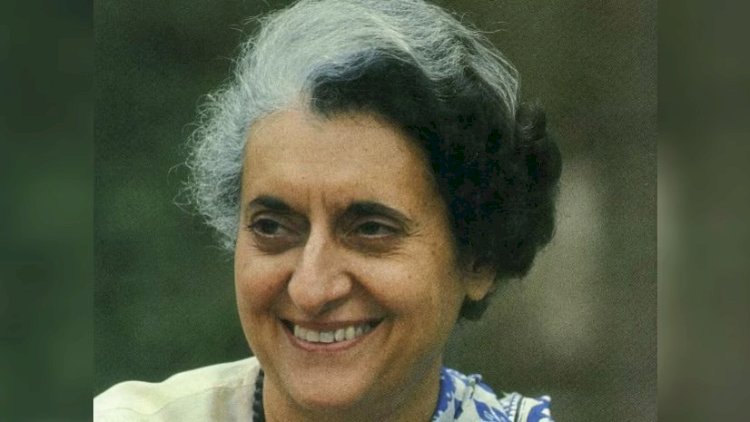Indira Gandhi: India’s First Female Prime Minister | Life, Achievements, and Legacy
Explore the life and legacy of Indira Gandhi, India’s first female Prime Minister. Discover her leadership, key achievements, and lasting impact on Indian politics and society.

Quick Info:
- Full Name: Indira Priyadarshini Gandhi
- Born: November 19, 1917, Allahabad, United Provinces, British India (now Uttar Pradesh, India)
- Died: October 31, 1984, New Delhi, India
- Occupation: Politician
- Notable Roles: Prime Minister of India (1966–1977, 1980–1984)
- Education: University of Oxford, Somerville College
- Awards: Bharat Ratna (1971), Lenin Peace Prize (1983)
- Known For: First and only female Prime Minister of India, Green Revolution, Emergency period (1975–1977)
Early Life and Family Background
Indira Gandhi, born on November 19, 1917, in Allahabad, Uttar Pradesh, was the daughter of Jawaharlal Nehru and Kamala Nehru. She belonged to the prominent Nehru family, with her grandfather, Motilal Nehru, being a key contributor to India’s independence movement. Her father, Jawaharlal Nehru, was a respected lawyer and later, a central figure in Indian politics, becoming the country's first Prime Minister. Indira was their only child, and she inherited a strong sense of patriotism from a young age.
In her childhood, Indira witnessed the struggle for independence. At the tender age of five, she chose to burn her English-made doll to show her support for the nationalist movement, which encouraged boycotting British goods.
The Formation of Vanar Sena
At age 12, Indira created the "Vanar Sena" or "Monkey Brigade," inspired by the legendary band of warriors in the Indian epic Ramayana. This youth group contributed significantly to the independence movement by disseminating information, raising public awareness, and creating national flags. Though it was risky under British rule, Indira showed great courage and leadership.
Education and Personal Life
Indira completed her matriculation at Pune University, followed by studies at Shantiniketan in West Bengal. She later pursued higher education in Switzerland and at Somerville College, Oxford, in London. She spent time caring for her mother, who was battling tuberculosis in Switzerland, while her father was imprisoned in India.
Indira met Feroze Gandhi through her involvement in the Indian National Congress. Feroze, a journalist and Youth Congress member, eventually became her husband in 1941. They had two sons, Rajiv and Sanjay Gandhi. Despite sharing the surname Gandhi, Feroze had no relation to Mahatma Gandhi. The couple faced societal challenges due to their interfaith marriage—Feroze was Parsi, while Indira was Hindu—but received support from Mahatma Gandhi.
Political Beginnings and Rise to Prime Minister
Indira’s political journey started with her helping her father in his role as Prime Minister post-independence. She eventually became involved in election campaigns, such as supporting Feroze during the 1951-52 Lok Sabha elections. Over time, Feroze gained a reputation for his anti-corruption stance, but he passed away in 1960.
In 1959, Indira was appointed as President of the Indian National Congress, positioning her at the center of Indian politics. After the death of Prime Minister Lal Bahadur Shastri in 1966, Indira emerged as a strong contender and succeeded him as Prime Minister, becoming one of India's most influential leaders.
First Term as Prime Minister
Indira’s first term saw major nationalization efforts, including banks and oil companies. She also implemented social reforms, aimed at increasing self-sufficiency in food production, and led India into the nuclear age with a successful test in 1974.
Role in the Indo-Pakistani War of 1971
The Indo-Pakistani War of 1971 marked a pivotal moment in Indira's career. As the Prime Minister, she supported East Pakistan's struggle for independence from West Pakistan, which ultimately led to the creation of Bangladesh. This victory strengthened her political image, showcasing her as a decisive leader.
The Emergency Period (1975-1977)

In 1975, following accusations of electoral misconduct, Indira declared a state of emergency, citing internal disorder. During this period, she suspended constitutional rights, imposed strict censorship on the press, and detained political opponents. Although this decision was controversial, Indira believed it was necessary to maintain stability in the country.
Return to Power and Second Term
After losing the 1977 election, Indira returned to power in 1980, capitalizing on internal conflicts within the ruling Janata Party. Her second term saw renewed challenges, including the Sikh separatist movement, which culminated in Operation Blue Star. This military operation targeted militants hiding in the Golden Temple, resulting in significant casualties and igniting tensions across the country.
Assassination and Legacy
Indira Gandhi was assassinated by her own bodyguards on October 31, 1984, in retaliation for Operation Blue Star. Her death led to widespread riots and marked the end of an era. Despite the controversies, Indira's leadership left a lasting legacy on India’s political landscape. She was instrumental in establishing India’s stature on the global stage and contributed to significant agricultural and industrial progress.
Honors and Memorials
Indira was honored with the Bharat Ratna in 1971. Numerous institutions and landmarks across India bear her name, including the Indira Gandhi National Open University and Indira Gandhi International Airport. Her life remains a testament to her resilience, vision, and impact as a powerful leader.
Indira Gandhi’s story is both inspiring and complex, illustrating the multifaceted challenges of leadership and the enduring influence of a strong-willed individual in shaping the course of a nation.

 Deepak Maurya
Deepak Maurya 































